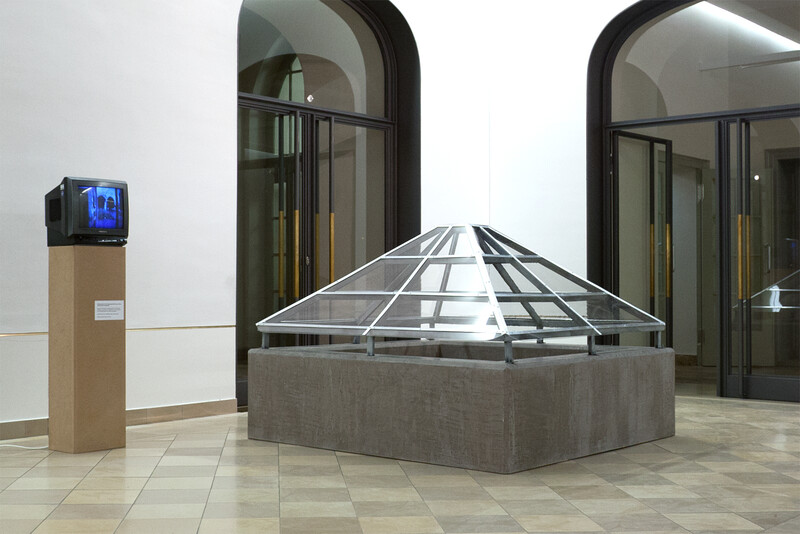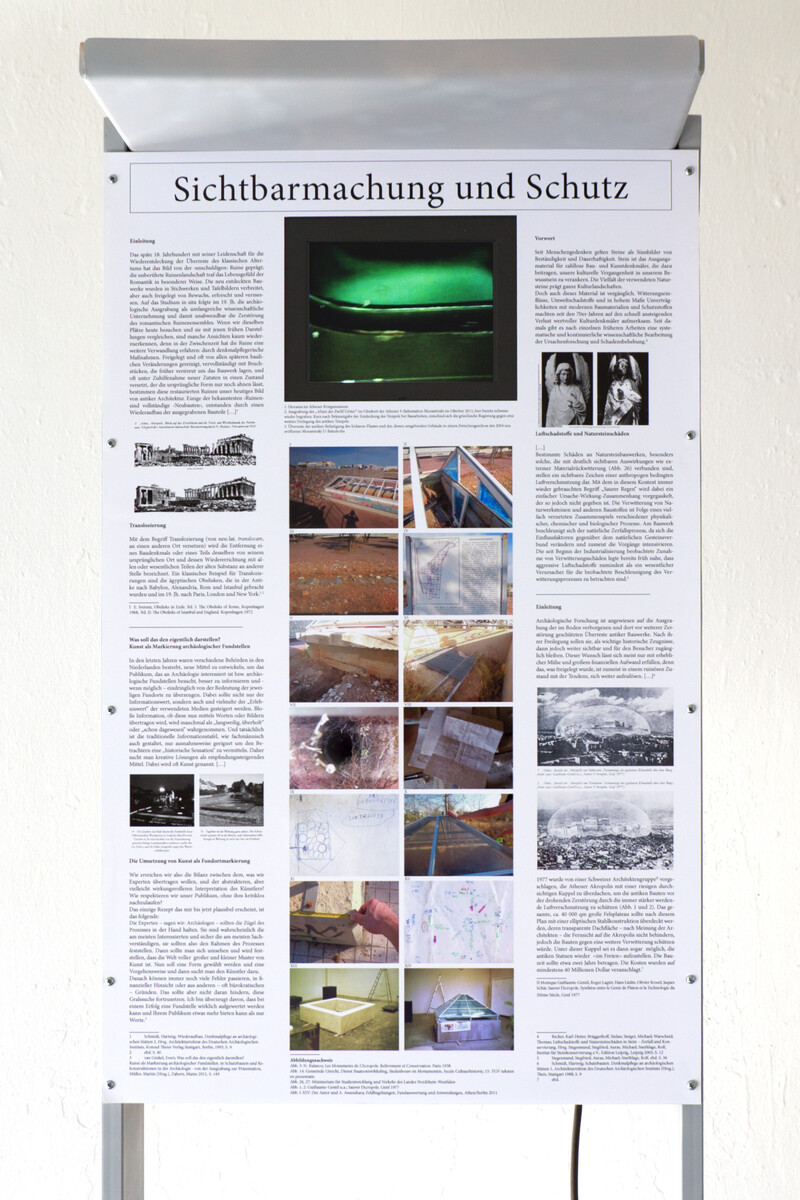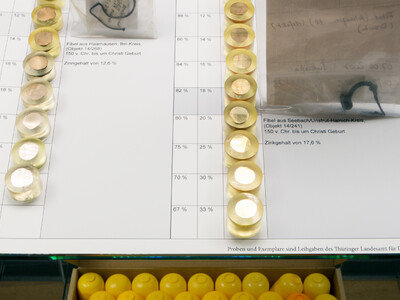
Replica of a protective structure built to conserve and present the ancient Hadrian aqueduct at the Olympic Village of the 2004 Summer Olympics in Athens, Greece (180x180x130cm) and video on CRT-TV (digitized Hi8, 11:40min loop).
The Olympic Village for the Athens Olympics in 2004 was built in the northern periphery of the city, on a previously undeveloped area at the foot of Mount Parnitha. Below the housing complex lie some of the tunnels and basins of Hadrian's aqueduct, whose construction was initiated by the eponymous Roman Emperor to supply Athens with water in 200 A.D. To comply with prescribed standards for the preservation of antiquities, the aqueduct had to be integrated into the village’s architecture and infrastructure in a way that would render it visible as well as protected. One of the measures taken to fulfil these requirements was the installation of windowed canopies in different sizes and shapes, covering the access shafts to the underground part as well as a shorter exposed part of the aqueduct.
As the majority of its structure is situated underground, the canopies stand in as a reference to the aqueduct and its route through the new housing complex. Marking the otherwise invisible site, they assert the ancient aqueduct’s relevance as an instance of human history, inscribed in the sediments of the history of earth. Localizing the otherwise invisible site, they assert its relevance as an instance of human history, inscribed in the sediments of the history of earth. By relocating the canopy—even if merely as a copy—the architectural means of protecting and making visible the archeological site become an archeological exhibit itself.

Kopie eines Schutzbaus zur Konservierung und Präsentation des antiken Hadrian-Aquädukts im olympischen Dorf der Sommerspiele 2004 in Athen (180x180x130cm) und Video auf Röhrenfernseher (Hi8 digitalisiert, 11:40min-Loop).
Das olympische Dorf für die Sommerspiele 2004 in Athen wurde auf einem zuvor unbebauten Areal in der nördlichen Peripherie der Stadt, am Fuße des Berges Parnitha errichtet. Unter dem Areal befinden sich einige der Tunnel und Becken des Hadrian-Aquädukts, dessen Bau im 2. Jh. durch den namensgebenden römischen Kaiser Hadrian initiiert wurde um Athen mit Wasser zu versorgen. Um den Vorgaben zur Präservierung von Altertümern gerecht zu werden, hatte man das Aquädukt so in die Wohnanlage zu integrieren, dass es sowohl sichtbar als auch geschützt ist. Als eine der Maßnahmen zur Integration der antiken Strukturen, wurden Schutzdächer in verschiedenen Formen und Größen konstruiert. Sie bedecken sowohl die Zugangsschächte zum unterirdisch gelegenen Teil des Aquädukts als auch einen kürzeren freiliegenden Teil.
Da der weit überwiegende Teil der Anlage unterirdisch gelegen ist, stehen die Schutzdächer stellvertretend für das Aquädukt und markieren seinen Verlauf unterhalb der neuen Wohnanlage. Indem sie die sonst nicht sichtbaren Tunnel markieren, machen sie ihre Relevanz als den Sedimenten der Erdgeschichte eingeschriebenen menschheitsgeschichtliche Artefakte geltend. Durch die Versetzung des Schutzdaches—und sei es als Kopie—, wird dieses architektonische Mittel zur Sicherung und Sichtbarmachung archäologischer Stätten selbst zu einem archäologischen Exponat.









